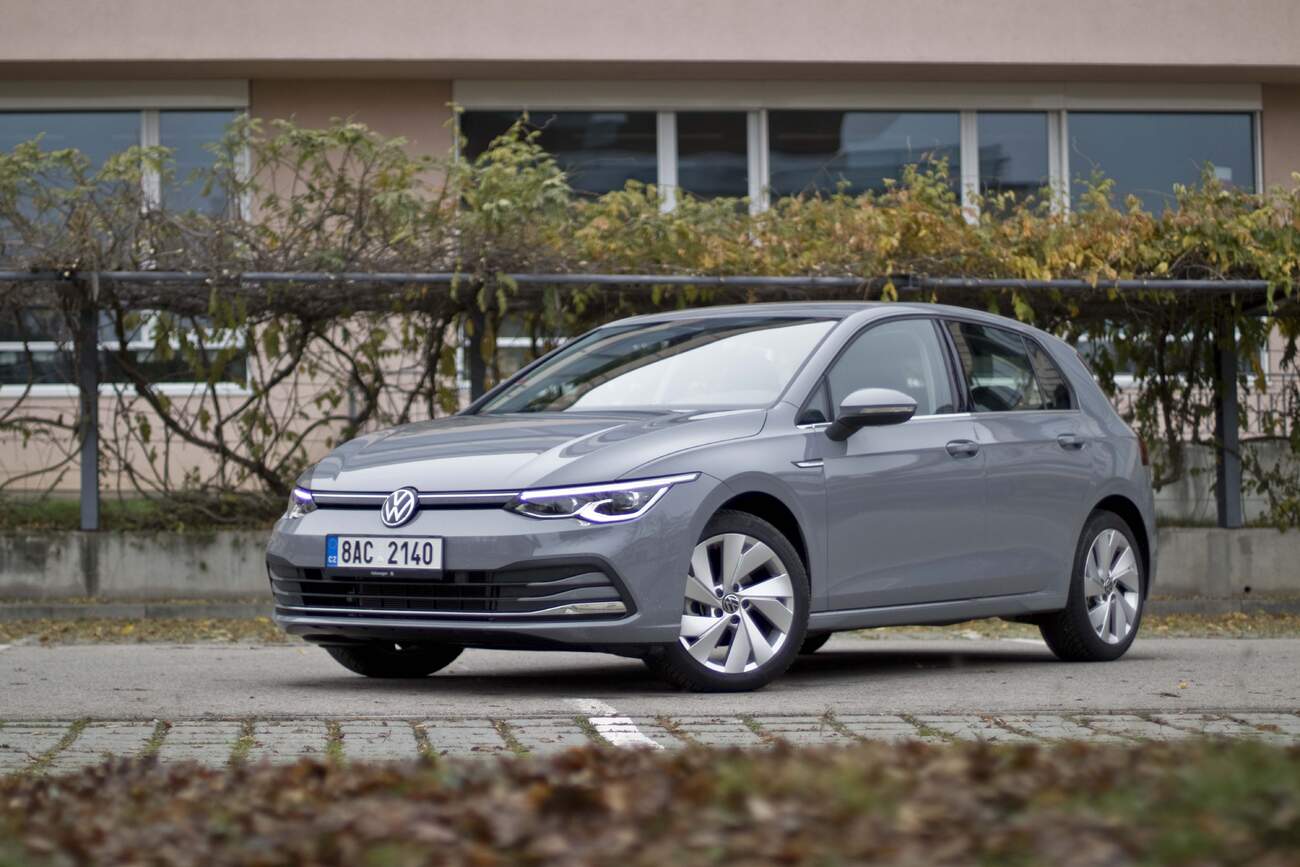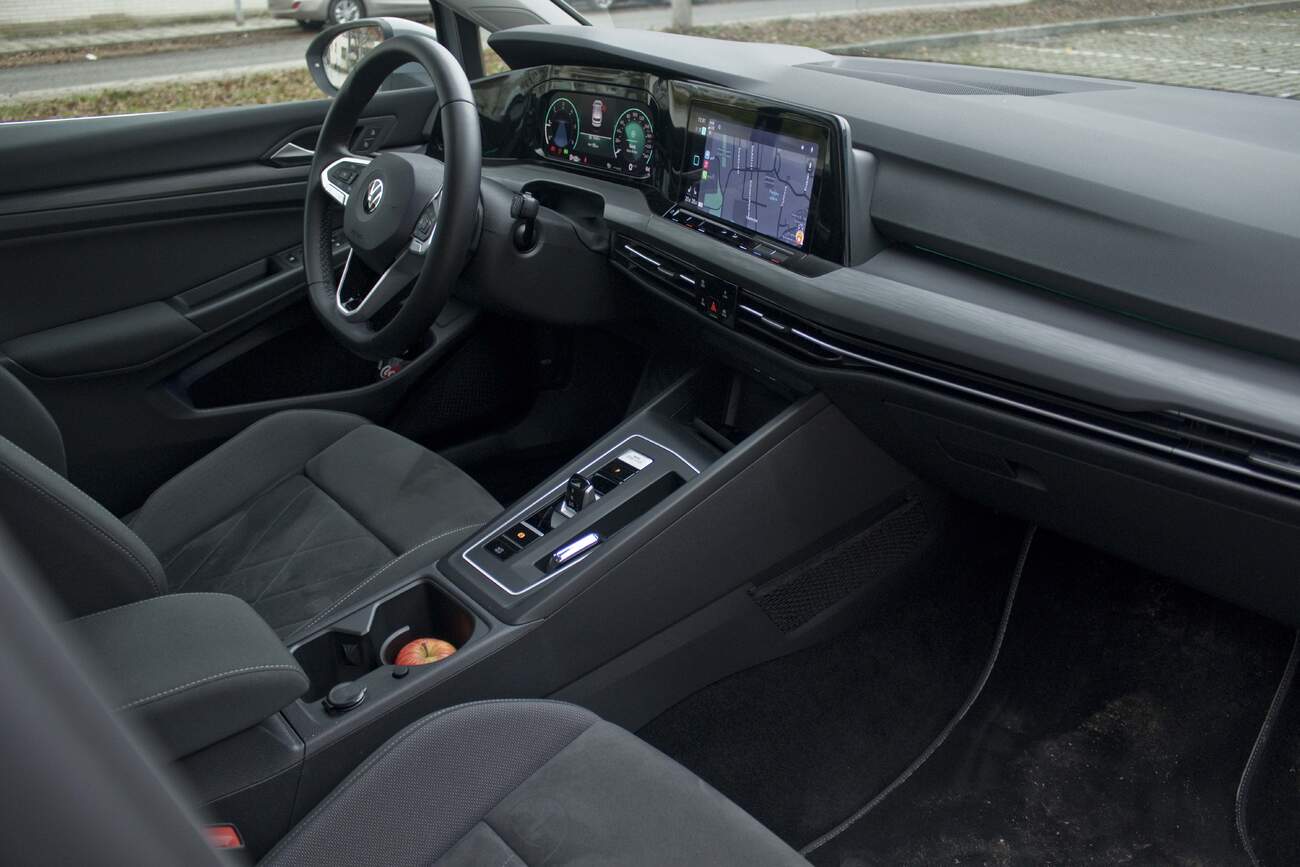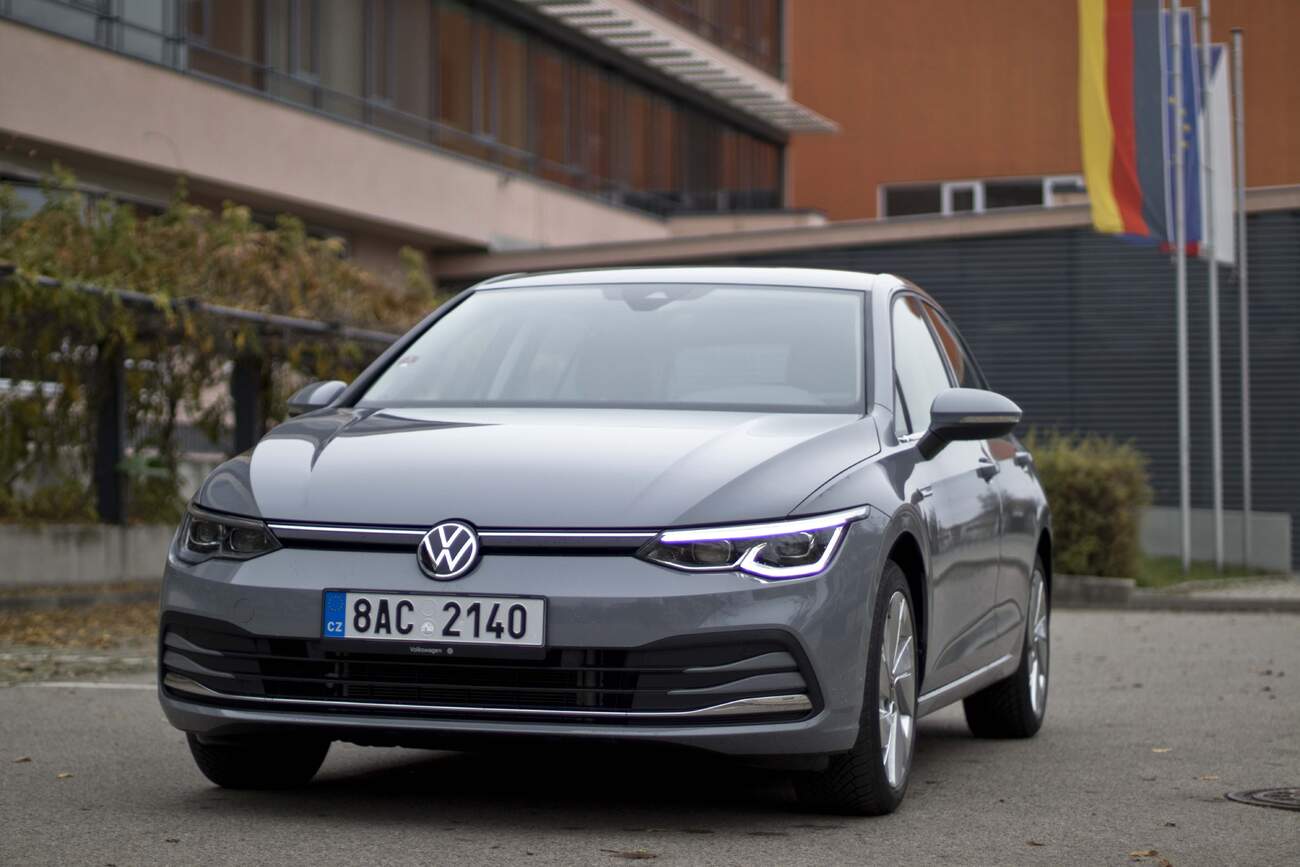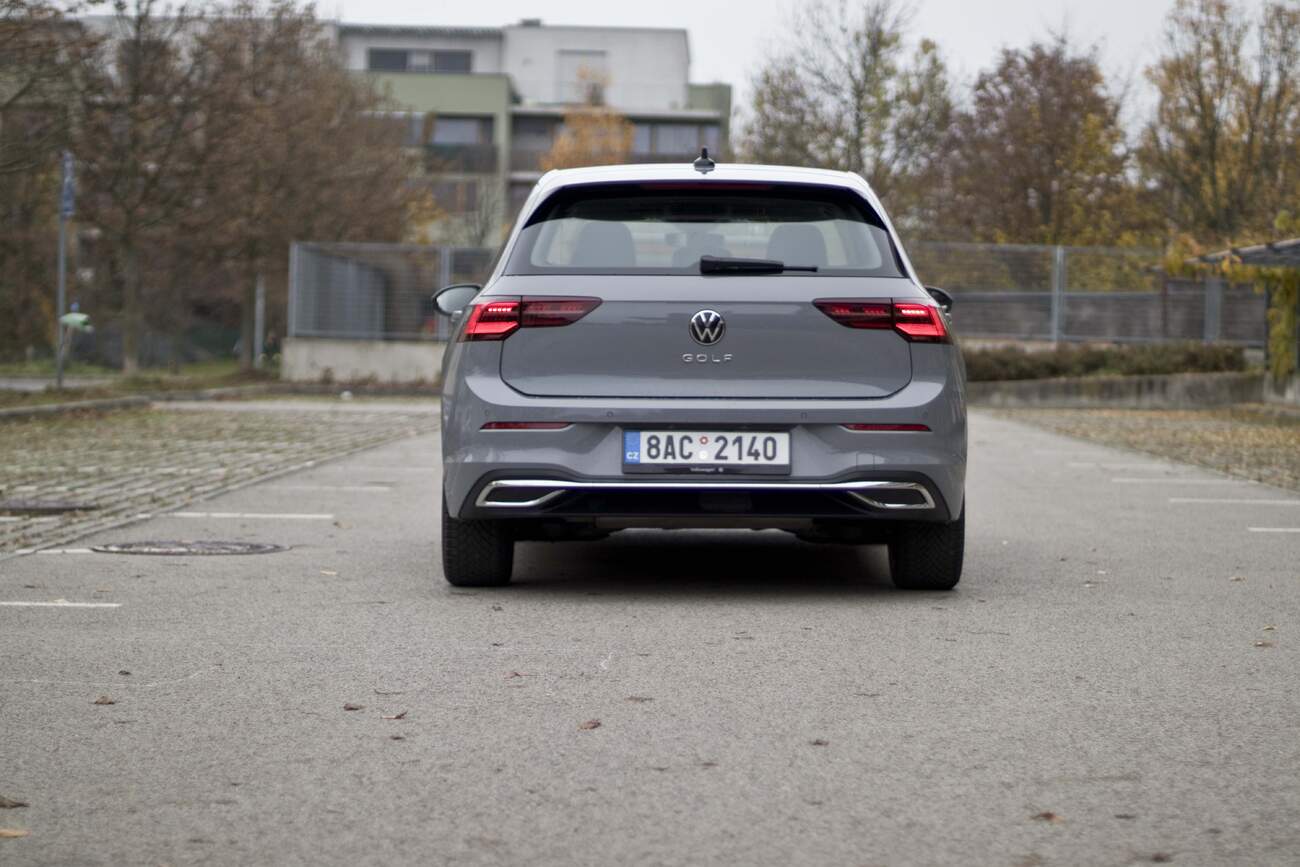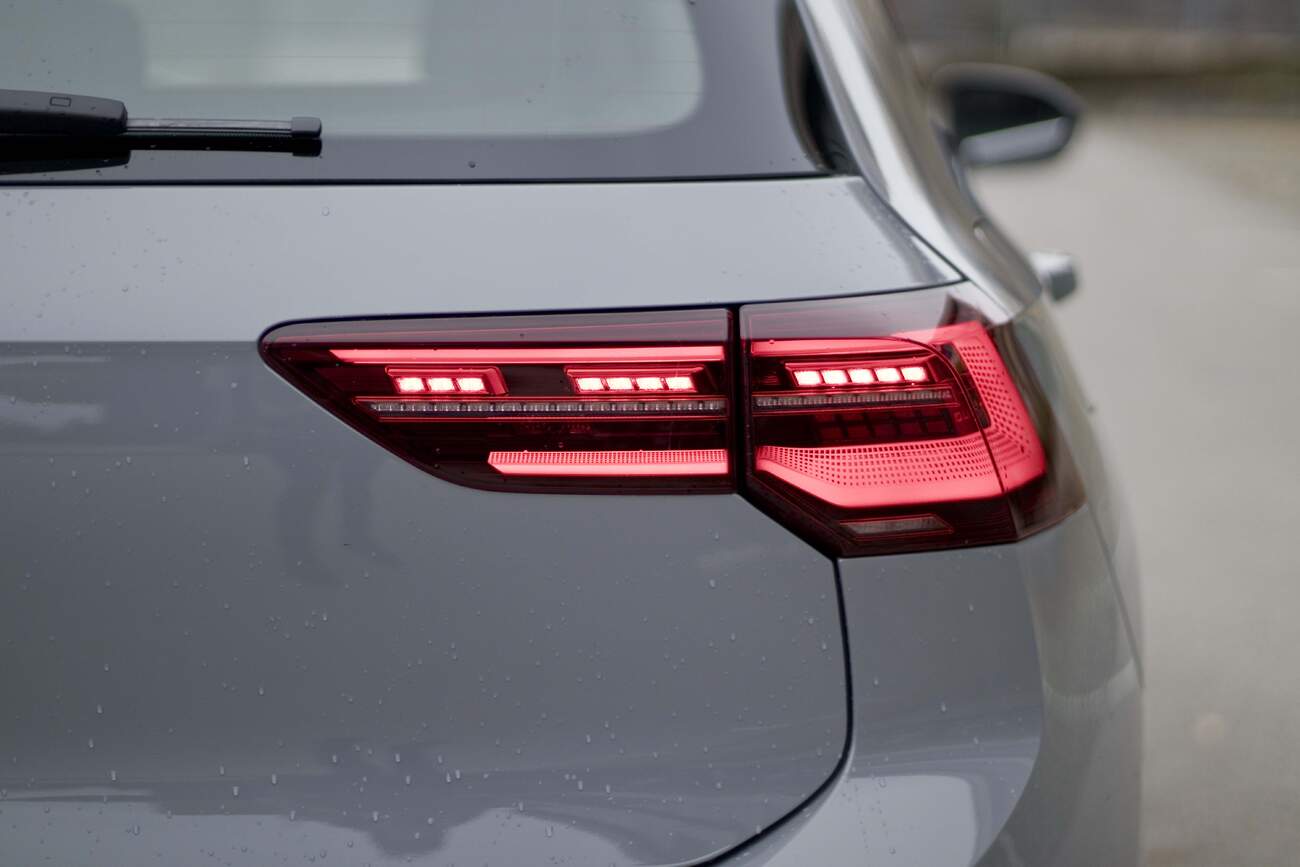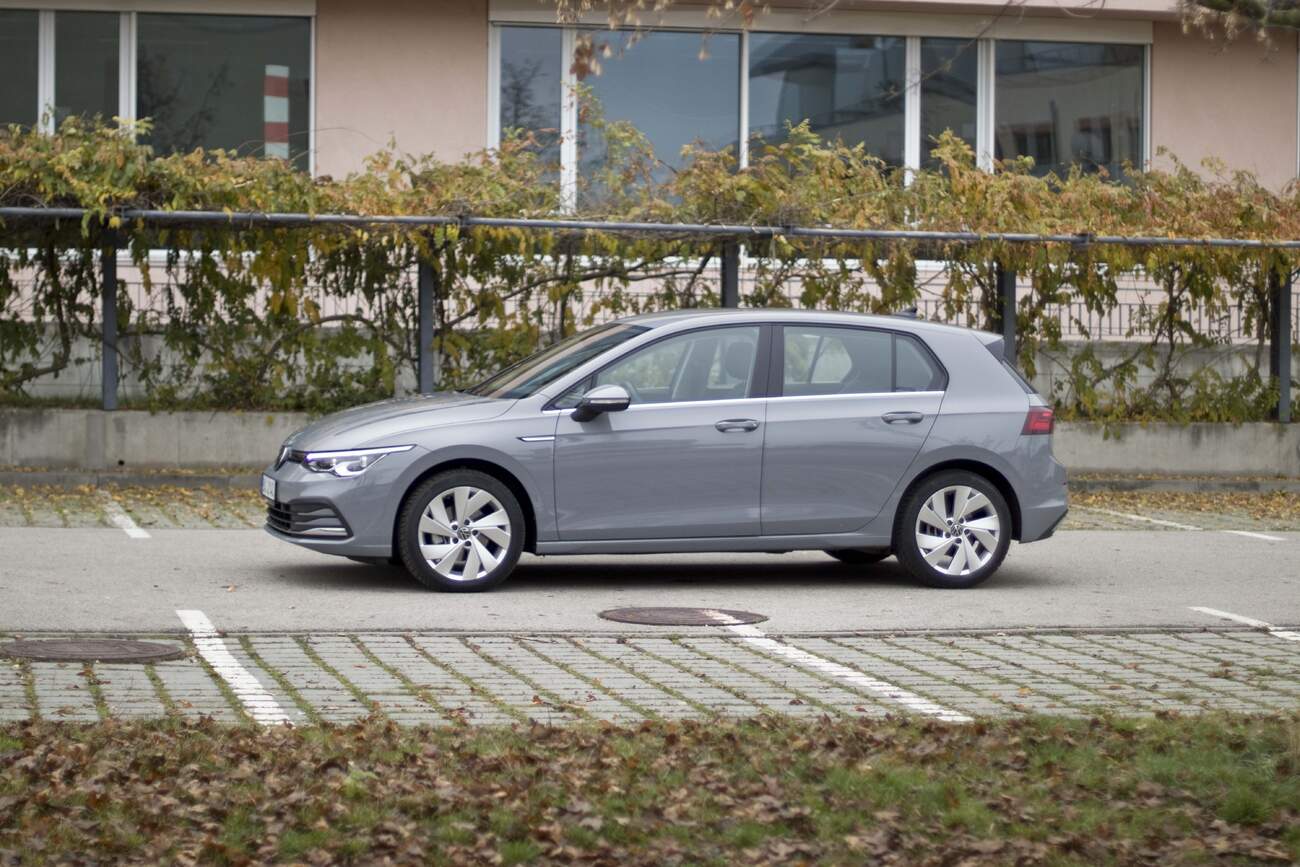After progressive mildhybrid Focus here’s something for a more conservative audience. Kdepak Focus – this Volkswagen Golf has been a benchmark and model of the lower middle class or small family car for decades. Small on the outside and big on the inside, economical, compromise and most importantly perfectly efficient. Perhaps the best-selling European car in all generations, a genius of mediocrity that the competition is trying to imitate or define against it. The most classic classic. And with such a classic, radical changes are always a bit of a hassle…
The design remained a Golf Golf in the eighth generation. In my opinion, the butt did a little better, the front looks a bit pinched, but overall, the car looks exactly as bland and standard as ever before in its long history. The color of the wet concrete gives it a crown. But inside, there was a revolution, even an armed coup. And I immediately admit that, despite all my efforts, I cannot evaluate this revolution as a change for the better.
The glossy strip stretching from the center display through the instrument panel to the light settings is great, and I think without irony. It looks austere and futuristic, there are plenty of display options, so nice graphics are just not visible. But this is Golf, not DS or Honda E, where one somehow expects the priority of style over functionality. This is supposed to work at first good, without thinking and without asking. Sit down and go. It should be rectangular, clearly visible and full of clearly described buttons. Instead, there’s no button (unless I count the one on the steering wheel). Below the display, you will find touch pads that pretend to be buttons, but it’s just fake and pretense. The volume knob is definitely gone, rest in peace. It was replaced by a capacity bar, where you hit the right place with a success of 50:50 while driving.
If you want to turn off the annoying start-stop, you have to go to the main menu, select the option “vehicle”, then the mysterious item “status” and only under it hides the function you are looking for. Are you serious? I’m starting to understand why people are willing to destroy half a car and lose their warranty, just to make the misery solved once and for all. Same air conditioning. The air conditioning should have buttons and basta fidli. Before I find the internal air circulation setting in the system, the cab turns into a gas chamber. I really don’t know what’s effective about this. About the cost of production. And last but not least, I can’t even taste the interactive menu with a picture of a car, which you have to turn around to try-and-click on the settings you need.
So I don’t know you. Why? I understand that saving is required, but this car is definitely not so cheap that the investigation can stand up as an argument. Or I’m just too old to understand the world in which cars are designed for a generation born with a display stuck to their hands. It’s starting. I see my future in an investment youngtimer and with a push-button telephone… In any case, the infotainment solution of the new Golf destroys the fundamental character of the austere VW and with it all the life assurances of a conservative driver.
Dirty laundry is solved, let’s go to more pleasant things. If I stay inside the car for a while, I have no objection to the atmosphere in the cabin. It’s airy and clean, with just a few controls left on the steering wheel and center console. There is no shortage of storage space around (I just don’t know where the spectacle compartment has gone), I like the carpet-lined pockets in the door and the comfortable seats, where you can sit comfortably low. The materials do not inspire in any way, but on the other hand, they do not offend. Adaptive cruise control works perfectly and the collision warning is less blatant than you’d expect, so the only thing that sometimes sniffs me is the lane assist behind the wheel. Basically, everything does what it has to do. And it’s even happier with the ride.
The 2.0 TDI Evo engine can be tuned from 115 to 150 hp and the concrete gray Golf has received the strongest variant. It should be interesting especially for the great ratio of dynamics and consumption. After starting, he knocks a little, but then he behaves exemplary quietly and discreetly. I have only one reservation about the ride itself, and these are more cumbersome departures from the place, probably a victim to the altar of the emission certificate. But it is enough to encourage the reaction to the accelerator pedal with a sports regime, and this worry will disappear. Just a pleasant, quiet (or rather well soundproofed) and nimble engine that fits the car. I was not disturbed by the seven-speed DSG, which I never looked for twice in diesel engines. Lately, I have a feeling that – especially in corporate cars – the dual clutch does not understand petrol. But let’s not go around the hot mess. I know what interests you the most and I’ll tell you too…
Consumption! Like everyone who has ever taken part in pub disputes about motoring, I have come across a bold theory supported by many real experiences that the VW Group’s diesel engines do not consume fuel, but generate it. The two-liter Golf, the standard of such a group weekday, is a welcome chance to verify the thesis. And because I respect you, the readers of Autíčkář, and do not hesitate to make sacrifices for your information, I took a serious test and completed the journey from Sobotka to Smíchov in Prague, so-called for consumption. That is, in ECO driving mode and in accordance with regulations. The data from this adventure ride are as follows. Roads first to third class, stable speed between 80 and 90 (depending on the surrounding traffic) – 4.2 liters per hundred. Highway, stable speed at a cruise control of 136 km / h (again, I have some professional honor) – 5.1 liters per hundred. The overall profile of the district-highway-southern junction road – 4.6 liters per hundred. The conclusion of the experiment is that the TDI Group unfortunately does not produce diesel, but it can be considered very economical. In fact, I don’t remember ever reaching similar values in a car in my life, even though I couldn’t reach the number that some more experienced colleagues boasted about in the tests.
Even more interesting for me, however, is the fact that the return journey in the Sport mode, the structure of which is not appropriate to publish in detail, ended with the number 5.6 liters. This makes a difference of 30 crowns between joyful freedom and desperate resignation to life. I would love to pay extra.
Another thing worth paying off for that extra crown is the adaptive chassis, which works great – and even fantastic for a diesel front wheel. Even when cornering fast, it remains as neutral as Switzerland and simply goes where you lead it, all without rattling, bouncing and banging. We would look in vain for a connection between the driver and the machine, the whole experience is very withdrawn and electronic, but perhaps no one connects these desires with Golf in the week. I expect more precision and efficiency, and that’s exactly what I’ll get. Even more surprisingly, the chassis behaves on the highway, where the Golf looks like a bigger car – quiet, stable and confident.
Verdict
You have no idea what I’m going to say now. If it weren’t for that awful radio map, it’s a good car. And yes. Everything related to driving is good – the engine and transmission, the chassis may be better than good. In lower equipment without DCC and multiline in the back, it may not be such a hype, but this version really worked. That it was sparing here and there in the cabin, I could live with that. Only those displays didn’t win me over. And I think most drivers who are as old and comfortable as I am will swear at them in exactly the same way. It’s not a principle and the fact that the grass used to be greener, the young people more respectful and instead of reading on the phones we read books. The point is that the DNA Golf doesn’t fit my victory over form. I don’t want a cockpit like from Star Trek (or Peugeot), I want back German pragmatism, sterility and racio.
Specifications:
Engine: Supercharged diesel four-cylinder 1 968 ccm
Power: 110 kW (150 hp) at 3500 rpm
Torque: 360 Nm at 1,750 – 2,750 rpm
Transmission: seven-speed DSG
Top speed: 223 km / h
Acceleration 0–100 km / h: 8.8 s
Operating weight: 1,540 kg
Average consumption according to the manufacturer: 3.7 l / 100 km combined
Average test consumption: 5.1 l / 100 km combined
Basic price with the given motorization and Style equipment: CZK 761,900
Price of the tested car with surcharges: CZK 859,100
– .
